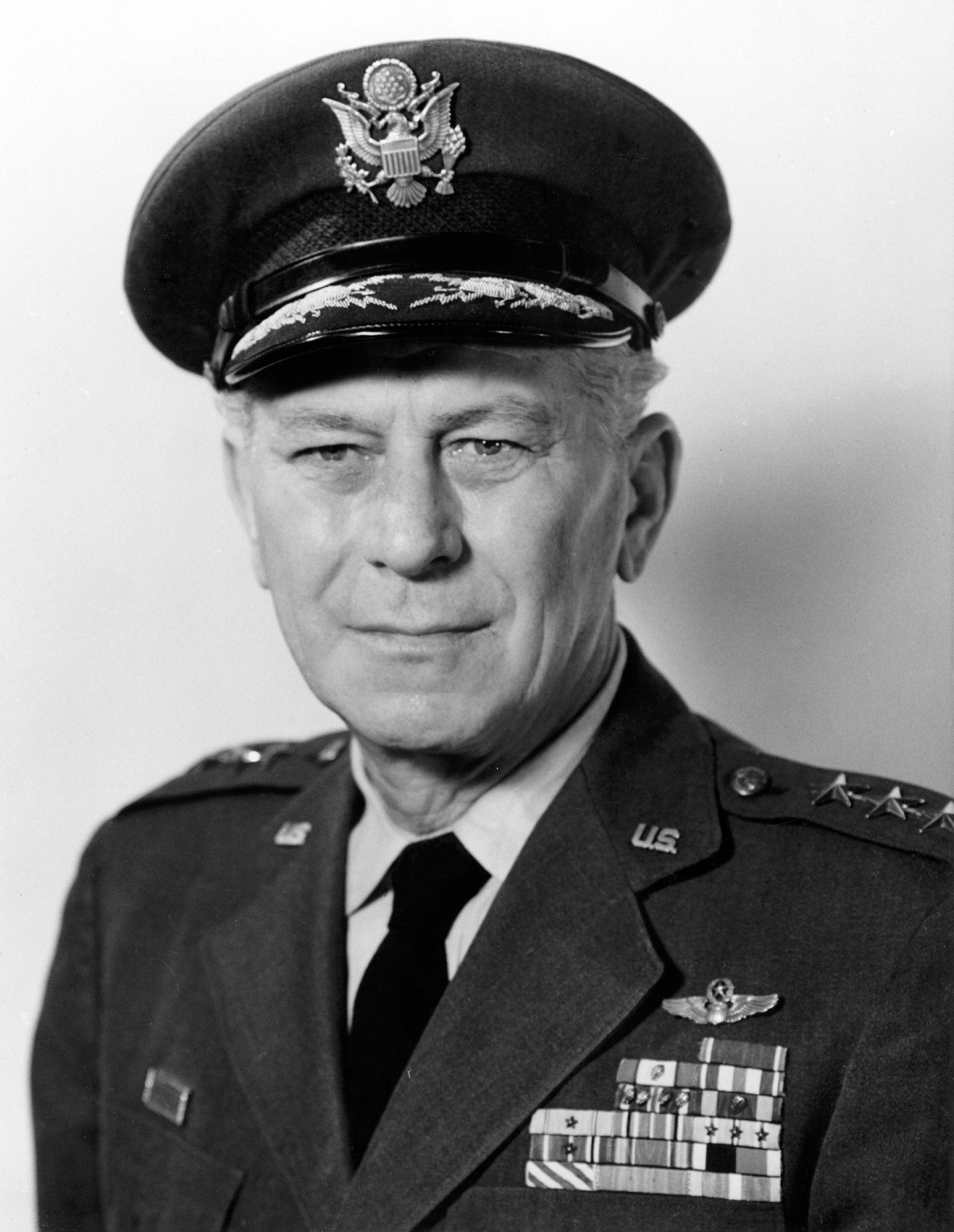Armstrong, Frank A. (Frank Alton), 1902-1969
Variant namesBiographical notes:

Public Domain, Link
Frank Alton Armstrong Jr. (1902-1969), was born in Hamilton, Martin County, N.C. He attended public school in Hobgood, N.C., and then received a law degree (1923) and a bachelor of science degree (1925) from Wake Forest University. He spent three years playing minor league baseball before he entered the Army Air Corps as a flying cadet (1928). In 1936 as a second lieutenant, he won the Distinguished Flying Cross for landing a heavily damaged bomber in Panama after ordering the crew to bail out. Armstrong witnessed the German blitz of England as a U.S. military observer in 1941. He returned to England in 1942 as commander of the VIIIth Bomber Command, and was soon promoted to colonel. In August 1942, he led the first U.S. Army Air Force daylight raid over Axis-held territory. This raid occurred over Rouen-Cotteville, France, and for his efforts, Armstrong received the Silver Star and an oak leaf cluster for the Distinguished Flying Cross. He also became the first U.S. officer to receive the British Flying Cross. As a brigadier general, Armstrong led the first American daylight bombing mission of Germany proper over Wilhelmshaven in 1943. Armstrong's experiences as a B-17 flyer during these missions formed the basis for the popular novel and film, Twelve O'Clock High. Armstrong briefly returned to the United States before being stationed in the Pacific in mid-1945. In the Pacific Theatre, Armstrong led the longest and last heavy-bomber raid over Japan from Guam to Honshu. Also in 1945, he led the first non-stop flight from Hokkaido, Japan to Washington, D.C. in a Boeing B-29. For his achievements in the Pacific, he was awarded an oak leaf cluster for the Distinguished Flying Cross.
After World War II, Armstrong served as Pacific Air chief-of-staff, senior air instructor at the Armed Forces Staff College, and commander-in-chief of the Alaskan Air Command. Armstrong also pioneered two record-breaking transatlantic. He received the Gold Medal of the Aero Club of Norway for pioneering non-stop flights from Alaska to Norway. Armstrong was promoted to major general by early 1950, and eventually to lieutenant general. In 1962 he was forced to retire at age 59, three years before the normal retirement age of 62. It is believed that this forced retirement was the result of a disagreement between Armstrong and General Curtis LeMay, Chief of Staff of the Air Force, about the strategic significance of Alaska (see note to researcher). Following his retirement, he and his family settled in Tampa, Florida. Armstrong was first married to Vernell Lloyd “Fluffy” Armstrong on 15 March 1929, and they had one child named Frank A. “Dutch” Armstrong III. Major Frank Armstrong III was a jet fighter pilot and was shot down and killed in Laos on 13 July 1967. Like his father before him, he was awarded the Silver Star for his military service. After Mrs. Armstrong’s death, he married Peggy Jennison. Armstrong died on 20 August 1969 at age 67 in Tampa. He was survived by his wife, Peggy, his sister, Mrs. I. T. Valentine Sr., and a granddaughter, Lloyd Armstrong.
Links to collections
Comparison
This is only a preview comparison of Constellations. It will only exist until this window is closed.
- Added or updated
- Deleted or outdated
Information
Subjects:
- Air pilots
- B-17 bomber
- World War, 1939-1945
- World War, 1939-1945
- World War, 1939-1945
Occupations:
- Pilots
Places:
- FL, US
- AK, US
- 01, BY
- ENG, GB
- NC, US
- NC, US
- 00, JP
- North Carolina--Hamilton (as recorded)
- Japan (as recorded)
- England (as recorded)
- Germany (as recorded)
